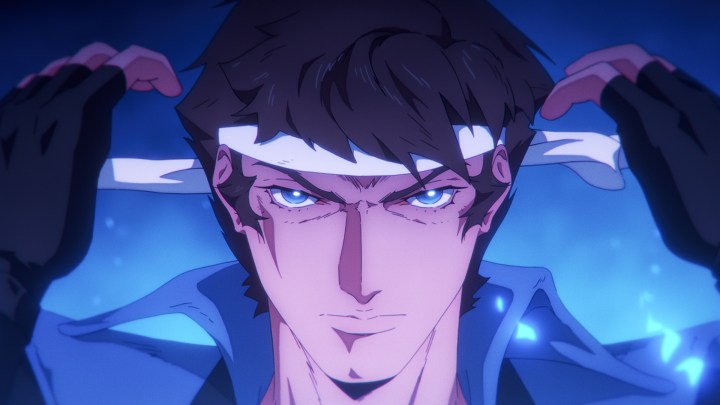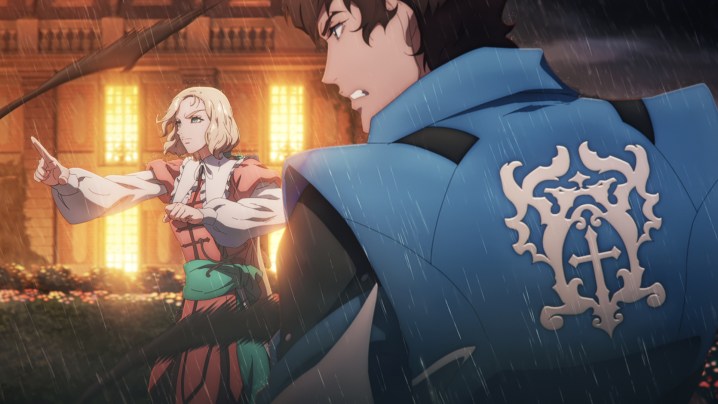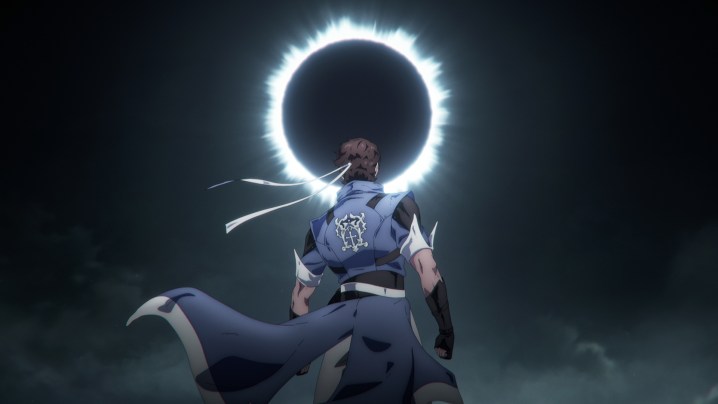“Castlevania: Nocturne is a sequel that doesn’t skip a beat from its acclaimed predecessor, introducing a likable new cast and raising the bar for animation even higher.”
Pros
- The sequel’s new cast is likable and worth getting invested in
- Excellent art direction and animation that raises the high bar set by Castlevania season 4
- An exciting story that’s a new entry point and builds on its predecessor’s lore
Though not as much as it deserves, animation has been gaining mainstream traction in recent years, and Castlevania: Nocturne is one of Netflix‘s greatest standouts in this department. Video game adaptations have garnered a reputation for generally being lackluster at best and laughable at worst, which is why the original Castlevania series was such a welcome surprise.
The series was a stylish blend of Japanese anime, engrossing dark fantasy, and a creative team that wasn’t embarrassed by its source medium. Showrunner Clive Bradley’s Castlevania: Nocturne is no exception, as the sequel series doesn’t skip a beat from the high bar its predecessor set between Powerhouse Animation Studios’ stunning animation, excellent performances, and a new cast worth getting invested in.
A worthy succession of the Belmont line

Castlevania left a strong impression in the show’s 4-season-long run, giving Clive Bradley a tall order to fulfill. And while it remains to be seen how the new cast will fare by the end of this Castlevania: Nocturne, however many seasons it may run for, Richter Belmont and his supporting cast also make a good first impression.
On the villainous front, Elarica Johnson’s Drolta Tzuentes and Franka Potente’s Erzsebet Báthory are worthy adversaries. While the commanding presence of Graham McTavish’s take on Dracula is impossible to outright replace, much like Castlevania seasons 3 and 4, these new vampiric antagonists create new stakes that feel sincere in their own right. Likewise, using the real-life Hungarian noblewoman and alleged serial killer for Nocturne‘s vampire queen was a fun and inspired choice to drive home the “blood-sucking aristocracy” theme.
As for the new lead, the strongest aspect of Richter is how he’s distinguished from Trevor while still feeling like a natural successor to the Belmont clan. Trevor was cynical and jaded, but he was also witty and had a golden heart at his core. In slight contrast, Richter is written in a way that captures a similar sense of tragedy without feeling derivative, and with a charmingly sarcastic sense of humor and compassion. This is complemented further by his relationship with Maria, who has an endearing and resonating surrogate sibling dynamic.
That’s also not to say that she doesn’t stand as an investing character on her own terms, as Maria’s journey throughout Castlevania: Nocturne is crucial to both her growth and the main plot’s development. Similar things can be said for the rest of the cast, helped by collectively stellar voice-acting work, who all have unique and believable motivations that simultaneously bring them closer together.
Powerhouse Animation’s strongest showcase yet

Animation has been a welcome strong point in Netflix’s catalog, with some talented production outfits lending their skills to originals like this. Powerhouse Animation Studios is easily among them, having made its first big stamp on the TV streaming scene with the original 2017 series, and Castlevania: Nocturne, in many ways, feels like a grand culmination of everything the team’s learned so far. Fully embracing its anime influences in both character design and animation, these elements combine for some visceral fight scenes and visually dramatic set pieces.
That’s especially telling considering the high bar Nocturne‘s predecessor set. Season 1 of the original show was already impressive for a first outing, but by seasons 3 and 4, it was clear that the production team had elevated their talents and resources alike. The whole team deserves the plaudits for making this sequel as aesthetically pleasing as it is, but the returning directing duo of Sam and Adam Deats also earns a particular shoutout.
But even outside of the literal animation moving at a slick pace on screen, the overall art direction is more than worth highlighting. Using the French Revolution as a backdrop was a perfect foundation for this, with Castlevania‘s brand of dark fantasy putting an enticing spin on the setting. The character designs are just as strong as its predecessor, with the sleek anime-like renditions combined with inspiration from the game series’ longtime artist Ayami Kojima fitting seamlessly into this tantalizing gothic fantasy world.
Laying a solid foundation for the future

Since the beginning of this TV franchise, the writing teams have made no secret of taking creative liberties from the games. And as touchy a subject as narrative diversions are, it’s once again done effectively here. The way the story riffs off the classic Rondo of Blood is done affectionately, resulting in a series that triumphantly stands on its own two feet while also functioning as a natural progression to the Netflix canon.
That also makes Nocturne accessible for those just catching on, but it tastefully sows the seeds for what’s to come as well and rewards the fans who have been following along so far. It’s an exciting new addition to Netflix’s programming slate, and by season 1’s finale, Castlevania: Nocturne succeeds in thrusting this gothic fantasy epic forward between its well-paced story, crisp animation, and a cast of characters filled with promise for the quest ahead.
All eight episodes of Netflix, Clive Bradley, and Powerhouse Animation Studios’ Castlevania: Nocturne season 1 are available to stream now.
Editors’ Recommendations

